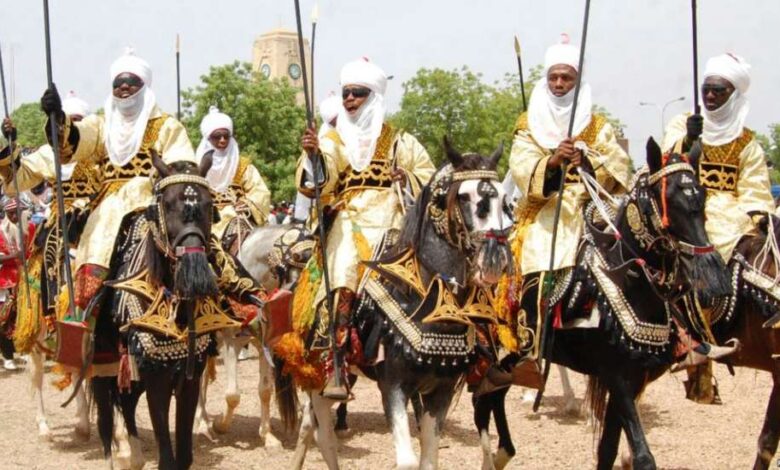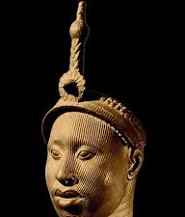The Emir of Gobir killing: The Fulani vs Hausa armed conflict that may consume Nigeria

After kidnap and killing of Emir of Gobir, assailants demand 60m to release corpse
IROHINOODUA EDITORIAL
A bizarre event took place in Sokoto State on Tuesday. The Emir of Gobir Isa Bawa was kidnapped. His abductors demanded for N60m. The relatives were about raising the funds after making contacts with influential figures including the Governor of Sokoto State, Ahmad Aliyu Sokoto, our source claimed.
The date for the payment of the ransom was nigh: Alas, the kidnappers murdered the Emir in cold blood. Not done, the kidnappers insisted on being paid before they release the body of the Emir of Gobir.
The media, as usual, glossed over the issue, undermining the deep-seated impact on the social-political crisis in Northern Nigeria and the almost imminent prospect of its consuming the country.
Unknown to many observers, the murder of the Emir of Gobir was the height of the smoldering intra-ethnic clashes between the Fulani and the Hausa which observers claim has taken thousands of human lives in the past one decade even as the ruling class of both ethnic groups try to subvert and gloss over the issue. The Hausa and Fulani are distinct ethnic groups, but in Nigeria found a common political destiny in being referred to as Hausa-Fulani.In the past three decades, the years of misrule, poverty, hunger, exclusion and deprivation by the ruling class in the North, has exposed the internal contradictions which for decades have been veiled under the cover of Islam.
The policy of exclusivity and the taking over of Nigeria in 2015 by Fulani far right led by former President Mohammadu Buhari, has further deepened the dialectics of conflict and asymmetric war between the Fulani and the Hausa, which has now taken the shape of armed conflict even as successive governments underplay the peril.
The kidnap and killing of the Emir of Gobir is nothing but a brutal continuation of the bitter, bloody conflict.
Ghali Abdulazeez, a social commentator said a ‘terrible thing happened in Sokoto State. The Emir of Gobir, a respected leader, was kidnapped in his palace a few days ago. The kidnappers demanded for N60m and five motorcycles as ransom. Now, the kidnappers are refusing to release the Emirs’s body until they got the money and motorcycles.’
The murder of the Emir of Gobir, a Fulani man, we have been informed is linked to the current radical and often violent on-going agitation by the Hausa, who were the original owners of the land, before the 1804 Jihad which they appear to view as usurpation of their ancestral rights.
For many who may not understand the history of the feud, before 1804, Gobir was ruled by Hausa kings and their reign lasted for 700 years. The area flourished under Hausa rule in the 11th century. The head quarter of the dynasty was in Alkalawa in Northwestern Hausaland. In the 15th century, the Hausa King conquered many surrounding areas but the reign was broken briefly by the Tuaregs who had established the Sultanate in Agadez. Gobir regained its strength under Hausa rule and became fortified.
The Hausa King, Bawa, invited the Fulani scholar, Uthman |Dan Fodio to Gobir in 1774. Fodio, who came from Fouta Jallon Island settled at a small town of Degel, and began preaching Islam to faithful.
‘Dan Fodio was employed as a teacher and he was responsible for giving education to the royal family and later to Yunfa the King that came after Bawa. Fodio used the oppostunity to complain about the burden the Hausa rulers placed on the poor. This drew him large followershipeven among the poor Hausa. ‘Sarki Nafata (r. 1797–98) reversed Bawa’s tolerant policy, and feared the increase of arms amongst dan Fodio’s followers. The next two rulers vacillated between repressive and liberal measures.’
In 1803, Yunfa, the Hausa King assumed leadership. He ran into troubled waters with Uthman Dan Fodio who had planned to assassinate Yunfa. Uthman Dan Fodio was sent into exile.
He organised a small infantry, assembled mainly Fulani nomadic men, armed them and then launched the Jihad in the spring of 1804. In the battle of Tsuntua, the Hausa put up a fierce battle, but Fodio had sent for reinforcement. In October 1808, Fodio seized Gobir, killed Yunfa, which brought an end to the Hausa rule. He was to expand his conquest to most part of Northern Nigeria up to Ilorin where a similar act of treachery led to the killing of Afonja and the imposition of an Emir.
‘Resistance against the Jihadists in many part of today’s Middle Belt but blurred by the oppression of the poor by the same Hausa Kings, something that isolated them from their own people. Yet, some Hausa resisted the Jihad in the north-east led by Sarkin Ali dan Yakubu and Sarki Mayaki. The Hausa ruler of Katsina assisted the resistance, which led to the Hausa shifting their capital to Tibiri, 10 km north of Maradi, Niger State in 1836. Around that time, the Gobir Sultan also rose against Sokoto Caliphate but the resistance was brutally crushed by Sokoto Sultan Muhammed Bello in the Battle of Gawakuke.’ In Niger Republic the old dynasty of the Hausa rulers of Gobir remains with a rival group of the dynasty in Sabon Birni north of Sokoto State.
On the other hand, ethnic minorities in Nigeria are fighting back. This is creating arms race in the country while the corrupt and inept ruling class look the other way.
The Hausa and other ethnic groups have suddenly realised the need to take back their ancestral land seizes during the Jihad. They appear to say seek their own identity unlike before. They believe the concept of one Nigeria remains a means of deceit and a plot that constantly put the Hausa to disadvantage.Many ethnic groups in the Middle Belt are also raising the flag of sovereignty from the Fulani stronghold. The TIv in particular, have had to raise armed groups to counter Fulani incursion. The Fulani on the other hand see Nigeria as the only country where access to political and economic powers are guaranteed. This has motivated them from across Africa to unite and build a movement that would prevent their exclusion from Nigeria, the country where the 1804 Jihad was most successful. This means armed Fulani groups from across Africa see the battle in Nigeria as theirs. Former President Mohammadu Buhari fortified this agenda in many ways unimaginable including treating the armed Fulani groups in the North West with kid cloves and even allowing them to occupy many ancestral homes and land in the South.
But the demand won’t be easy. It would mean the Emirs have to abdicate their seats. The United Nations Regional Centre for Peace and Disarmament in Africa in 2016 said 70 percent of a estimated 500m small arms and light weapons are in Nigeria, which means some 350m arms in the hands of non-state actors. The Director of the UN Regional Centre for and Disarmament in Africa, Olatokunbe Ige made this known few years ago.
The killing of the Emir of Gobir, Irohonoodua can authoritatively say, will fuel further revenge killings unless the Hausa and Fulani leaders rise up to the occasion and stop pretending. The crisis is already spreading to other parts of Northern Nigeria. The so called “bandits” is essentially Hausa indigenous revolt.
The resolution of the conflict will not be easy. It will involve first accepting that there is a major problem.
It will mean President Bola Ahmed Tinubu calling the Fulani and Hausa leaders together, identify the major grievances and work our short-term, middle term and long term solutions which would be both social, economic and political. The National Assembly must also realise that the National Question in Nigeria is real and has to be resolved before it is too late.
For now, both ethnic groups, Fulani and Hausa are importing mercenaries from Chad, Niger, Mali and Southern Sudan to prosecute what in itself has assumed a life of its own and may spread to other parts of Nigeria with grievous consequences on peace and stability in Nigeria.





